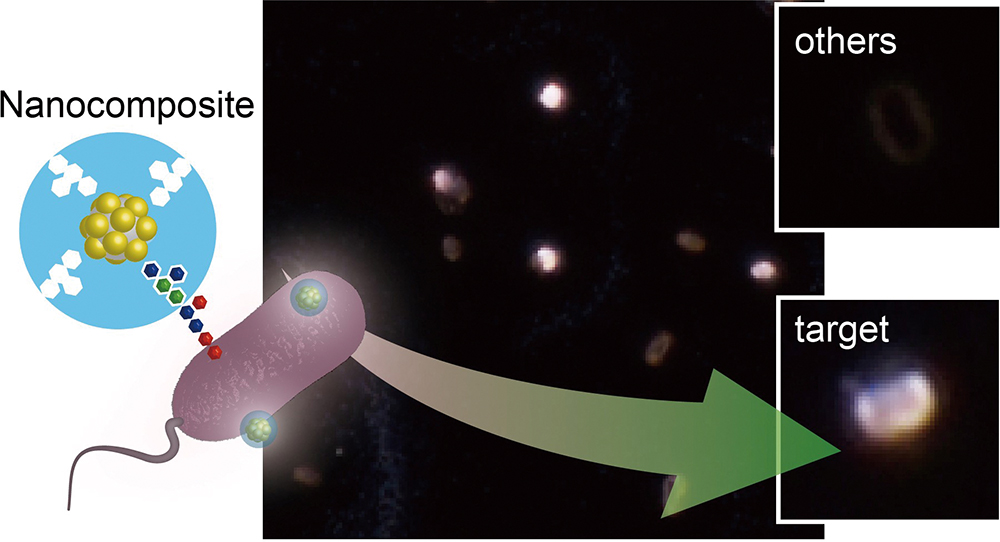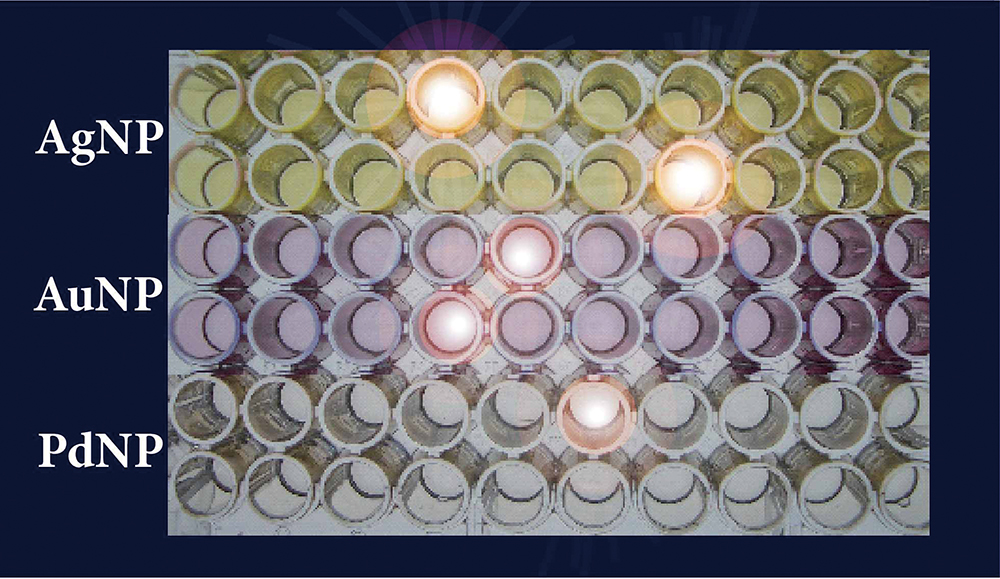- 著者
- So TANABE Satohiro ITAGAKI Shuyi SUN Kyohei MATSUI Takamasa KINOSHITA Shigeki NISHII Yojiro YAMAMOTO Yasuhiro SADANAGA Hiroshi SHIIGI
- 出版者
- The Japan Society for Analytical Chemistry
- 雑誌
- Analytical Sciences (ISSN:09106340)
- 巻号頁・発行日
- vol.37, no.11, pp.1597-1601, 2021-11-10 (Released:2021-11-10)
- 参考文献数
- 27
- 被引用文献数
- 2
Enterohemorrhagic Escherichia coli are a dangerous bacterium known to be harmful to the human body, with some infections even resulting in death. Given this danger, food factories are required to perform a quick bacterial test to confirm the absence of this pathogen prior to shipping. We have developed a novel molecular imprinting polymer (MIP) particle that has encapsulated gold nanoparticles (AuNPs) and which can function as both a receptor and an optical signal transmitter in biological systems. This MIP particle is artificially synthesized and can be engineered to specifically recognize and capture antigens on the bacterial cell membrane. In addition, MIP particles containing AuNPs generate strong scattered light signals, and binding of the MIP particles improves the optical intensity of the target bacterial cells. This enables clear visualization under a dark-field microscope and quantification of the target bacteria using the scattering light intensity. Here we describe the successful quantification of Escherichia coli O157 cells in real meat samples using this technology in conjunction with a simple labelling step.
- 著者
- Kyohei MATSUI So TANABE Shuyi SUN Dung NGUYEN Takamasa KINOSHITA Yojiro YAMAMOTO Hiroshi SHIIGI
- 出版者
- The Japan Society for Analytical Chemistry
- 雑誌
- Analytical Sciences (ISSN:09106340)
- 巻号頁・発行日
- vol.36, no.12, pp.1461-1465, 2020-12-10 (Released:2020-12-10)
- 参考文献数
- 31
- 被引用文献数
- 5
Enzyme-linked immunosorbent assay (ELISA) is a widespread analytical biochemistry assay. In this work, a direct ELISA method using a metallic nanoparticle (NP)-immobilized 96-well plate was developed for high-throughput, highly sensitive fluorescence analysis. Immobilization of metallic NPs on a 96-well plate effectively amplified fluorescence signals of the assay. The silver (Ag) NP-immobilized plate showed the best fluorescence enhancement effect of all the metal-immobilized plates tested. We used the Ag NP-immobilized plate to detect biomolecules and bacteria and found that both the fluorescence intensity and the limit of detection (LOD) were strongly enhanced by more than 100 times compared with those of the unmodified 96-well plates. Quantitative and qualitative considerations for target bacteria regarding the impact of autofluorescence on detection were successfully obtained for several strains. Our results demonstrate the potential of applying Ag NPs for enhancing the efficiency of direct and indirect ELISA assays.
- 著者
- Shuyi SUN Kyohei MATSUI So TANABE Dung NGUYEN Takamasa KINOSHITA Yojiro YAMAMOTO Hiroshi SHIIGI
- 出版者
- The Japan Society for Analytical Chemistry
- 雑誌
- Analytical Sciences (ISSN:09106340)
- 巻号頁・発行日
- vol.36, no.7, pp.787-789, 2020-07-10 (Released:2020-07-10)
- 参考文献数
- 11
- 被引用文献数
- 4
In this reported work, we achieved high-throughput, highly sensitive fluorescent analysis using an enzyme-linked immunosorbent assay (ELISA) that employed a metallic nanoparticle (NP)-immobilized 96-well plate. The immobilization of metallic NPs on a 96-well plate effectively amplified fluorescent signals of the assay. The silver (Ag) NP-immobilized plate showed the best fluorescent enhancement effect of all plates immobilized by metal NPs. Our results demonstrate the potential of applying Ag NPs to enhance the efficiency of direct and indirect ELISA by the labeling of targets.


